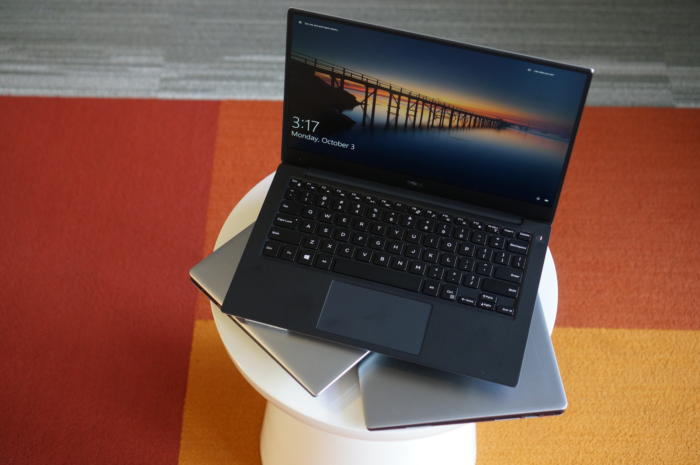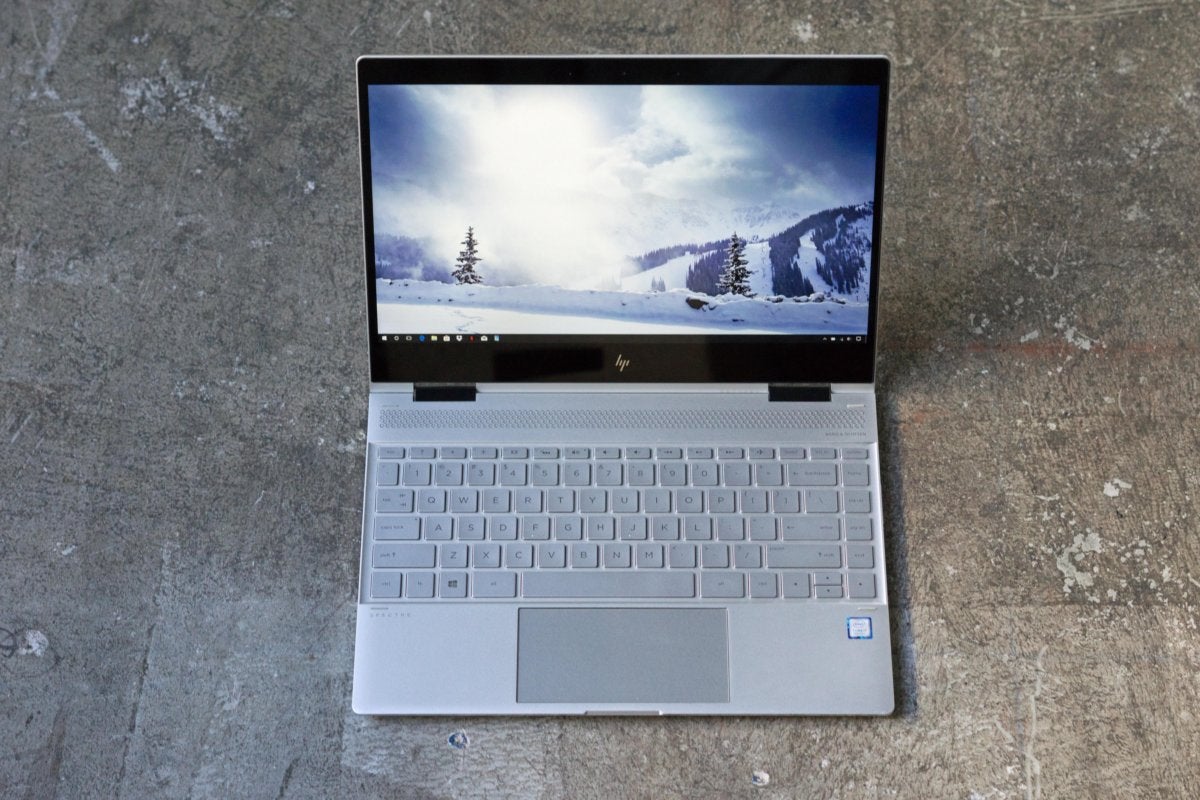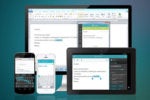The best laptops: Ultrabooks, budget PCs, 2-in-1s, and more
Our top picks feature the best tech advances in portable PCs, from new CPUs and GPUs to new materials.
 Rob Schultz
Rob Schultz
- Best ultrabook laptop
- Best convertible laptop
- Best budget convertible laptop
- Best 2-in1 / tablet / hybrid laptop
- Best gaming laptop
- Best budget gaming laptop
- Best portable gaming laptop
- Best luxury laptop
- Best budget Chromebook
- Best MacBook
The best laptops today are basking in the glow of Intel's 8th-gen Core CPUs, which at last bring quad-core performance to mainstream machines. The only thing missing is Oprah shouting, "and you get an 8th-gen quad-core laptop!"
There's plenty of good news with this new generation. Our favorite convertible laptop, HP's Spectre x360 13, stepped out with a quad-core 8th gen chip while maintaining its diminutive size. It's really the total package.
Intel's 8th-gen Kaby Lake CPUs are so pervasive now that our new favorite 2-in-1, Lenovo's Miix 520, features it, too. Yup: Believe or not, but if you want the best Surface Pro, it's made not made by Microsoft today.
The good news for Microsoft is it still holds the lead in our luxury laptop category, with the newly anointed Surface Book 2 as our top pick.
What's crazy is there's more to come. We're currently in the middle of testing Dell's 8th-gen-fortified XPS 13, which promises more performance in an even smaller package.
We haven't even seen Intel's new Core H-series parts: 8th-generation, quad-core Core i5 and Core i7 chips, married with what AMD calls the Radeon RX Vega M GPU. That’s right: discrete graphics on a mobile chip, thanks to a surprise partnership between the two longtime rivals. Intel has yet to commit to a ship date more specific than Q1 2018, but as of this writing, the clock is ticking louder.
Not to be outdone, AMD announced everything at CES except the kitchen sink, seemingly, including its own mobile chip, also with Vega in the name. Ryzen Vega Mobile promises high frame-rate AAA gaming in compact form factors, using an RX 580 GPU with its own memory. AMD promises we’ll see these chips sometime in 2018.
While we wait for these new chips to come out, there’s still plenty to love among current models. We have new picks for a faster budget gaming laptop (Dell’s Inspiron 15 7000 Gaming Laptop, currently about $980 on dell.com) and a portable gaming laptop (Gigabyte’s Aero 15X, currently $2,199 on Amazon) with good battery life.
Other recent reviews include the superthin LG Gram 14 (a shade under $2,000 currently on Amazon) and the versatile Samsung Notebook 7 Spin. Two gaming laptops we reviewed recently include the powerful Origin EON17-X, which should make desktops nervous, and the HP Omen 15 (available from HP), which could be a good gaming laptop with just a few tweaks. Keep reading for our top picks in every category.
Best ultrabook laptop
If it ain’t broke, don’t fix it—but while you’re at it, make it faster too. Yup, Dell basically added a Kevin Durant to its Golden State Warriors this year with the newest XPS 13.
Dell basically drops in a game-changing 8th generation quad-core into its award-winning laptop and goes to town. The rest is the same: a quality aluminium exterior and carbon-fiber top, and that wonderfully compact, bezel-free 13-inch screen.
Yes, we get tired of writing that the XPS 13 is the “best one yet” but in this case, it’s true in every sense of the word. If you're super hot on an XPS 13--you may want to wait until we finish our review of the new XPS 13 (preview here) that promises less weight, more performance and one compromise that may be too much for some.
 Gordon Mah Ung
Gordon Mah Ung
The Kaby Lake version of the Dell XPS 13 maintains that balance between portability, compact size, and performance that we like so much.
Our only lingering complaint is the small keyboard, but overall, you can’t lose with the newest XPS 13. It’s a truly compact ultrabook that punches out of its class.
[$800–$2,039 MSRP; $1199 MSRP as reviewed]
Runner-up
If looks are more your thing, the HP Spectre 13.3 (available at HP.com) certainly has a distinct profile: It’s one of the thinnest ultrabooks around. For anyone coveting the streamlined experience of Apple’s 12-inch MacBook, this 13-inch notebook will bring you close while providing superior performance.
You might expect such a skinny laptop to sport a lower-wattage Core i3 or i5 processor, but HP fits a 15 watt Core i5 or i7 processor into this Spectre. That puts it on par with other, chunkier top-tier ultrabooks, like the XPS 13. Combined with its 256GB M.2 SSD, it runs smoothly and swiftly during typical office drone work (word processing, spreadsheet editing, web browsing, etc), without any heavy throttling of performance during CPU-intensive tasks. HP also made the ports count: While there are just a few, you get not one but two Thunderbolt 3 ports, as well as a USB-C port.
The drawbacks of this modern and sleek notebook are its battery life, which is modest due to its smaller battery, and its wider frame. (The Spectre 13.3’s hardware and cooling configuration requires a certain amount of space—HP’s engineering is impressive but can’t defy the laws of physics.) It’s for those reasons that we prefer the Dell XPS 13, but this laptop is still a very fine companion.
[$1,170–$1,250 MSRP; $1,250 MSRP as reviewed]
Best convertible laptop
While Apple and Dell are content to show up to dance in the same dress year after year, you won’t have that from HP. Just two years removed from its original launch, the Spectre x360 13t (available at HP.com) has now gone through no fewer than three major redesigns. The latest, of course, is the best and adds a fingerprint reader, a nifty rechargeable pen, and of course, an 8th-generation Core i7 CPU too.
In raw performance it doesn’t quite keep up with Dell’s XPS 13 but this is a convertible and most convertibles give up a little performance for the ability to work as a tablet. What matters more is that it leaves the 7th-generation Spectre x360 13t in the dust on CPU heavy workloads.
 Adam Patrick Murray
Adam Patrick MurrayThe best part is battery life doesn’t suffer (it’s still damned good) and it’s even a couple of ounces lighter to boot. HP doesn’t make the faux pas, or is that port pas, and keeps a USB Type A port along with two Thunderbolt 3 ports that support external graphics.
So yeah, it’s easy to see why the Spectre x360 13t is our go to convertible laptop and the one everyone is chasing right now.
Lenovo's latest Yoga 920 (reviewed here) was considered here to push the Spectre from the top of the President-of-the-Hill contest ('Murica folks) but in the end, the extra weight of the 14-inch Yoga and the extra cost hurt its position.
[$1,090–$1,600 MSRP; $1,100 MSRP as last reviewed]
Runner-up
Samsung’s Notebook 9 Pro impressed us when we reviewed it. Compared to other models we’ve tested recently that offer a high-resolution touchscreen display, a 360-degree hinge, a cool metal chassis, and even pen support, it’s carefully designed to offer a little bit of everything, with a few standout features: a discrete Radeon RX 540 GPU, an integrated S-Pen with special Samsung applications as well as Windows 10 inking compatibility, and impressively long battery life. Given its good overall showing, the Samsung Notebook 9 Pro is a laptop many people can like, including entry-level gamers.
[$930 to $1,400 MSRP]
Best budget convertible laptop
For years, Asus has offered great value in its notebooks, and the ZenBook Flip (available at Amazon) is a strong example of its affordable, high-performing offerings. For $700, you get a fully convertible notebook that can handle everyday tasks with ease.
In fact, its pricing and specs are virtually identical to our favorite budget ultrabook, the Asus UX305 (now discontinued). Inside you get a Core m3-6Y30, 8GB of RAM, and a 256GB SSD, and outside there’s a 1920x1080 IPS screen with an anti-glare finish.
Yet despite the modest CPU, the Asus ZenBook Flip is fairly peppy. In our benchmarks, it actually outperformed faster (and newer) Core m5 and m7 processors in rival machines during short CPU-intensive tasks. Its storage drive is no slouch, either.
This laptop is slender and lightweight, too. It measures 0.54 inches thick and 2.8 pounds, which keeps it in line with more expensive ultraportables. You’re not saddled with chunkier dimensions or extra weight in exchange for a lower price.
A couple of compromises do exist: There’s no backlighting on the keyboard, and the trackpad is a tad springy. Still, it’s a good deal in a price range that usually nets you thick, ugly, and plastic.
[$699 MSRP (256GB model); $749 MSRP (512GB model) as reviewed]
Best 2-in1 / tablet / hybrid laptop
This category originally started out as the best "Surface" category because, well, for a time, there was nothing like Microsoft's 2-in-1 / tablet / hybrid device.
The best Surface-like device isn't built by Microsoft anymore, though. Instead, our pick for our top 2-in-1 / tablet / hybrid is Lenovo's IdeaPad Miix 520 (currently about $876 on Amazon.) Besides being almost affordable, the Miix 520 wowed us because of its 8th generation Core i5 CPU. Yup: That's a real quad-core CPU in a Surface-like device. Take that, iPad Pro.
If you're turning your nose up at the Miix 520 because it's "only" a Core i5, just know that in multi-threaded CPU-bound tests, you're looking at a 36-percent increase in performance over a high-end Core i7 Surface Pro.
So yeah, if you thought there was no way you could do CPU-heavy tasks on a Surface clone, you can. There's a price to be paid for that but you'll have to read our review for those details.
[$999 SRP as reviewed with included keyboard cover and pen]
Runner-up
Samsung’s follow-up to its first 2-in-1 (available at Amazon) doesn’t take any extreme turns off the established path. It’s still incredibly thin and lightweight, and it offers an even more stunning AMOLED screen that supports HDR.
But it’s still not quite our favorite convertible, and that’s partially due to Samsung’s decision to sell both a small and a big version of the Galaxy Book. The more affordable, lower-power Core m3 model has a smaller 10.6-inch screen. If you want a 12-inch screen, you’ll have to jump to a starting price of $1,130.
Despite these two tougher choices, the Galaxy Book is still compelling. It offers solid performance (including over 10 hours of video playback on the 12-inch Core i5 model) and addresses some of our complaints with the Galaxy TabPro S. You now get two USB-C ports, and the keyboard secures tightly to the tablet. And of course, it has that gorgeous display.
So while it may no longer have a huge advantage in price, Samsung still manages to hold its own with a few compelling features. Particularly the included pen—Microsoft’s equivalent accessory is a $100 optional purchase.
[$630 or $1,130 MSRP base price; $1,300 MSRP as reviewed]
Best gaming laptop
The arrival of Nvidia’s Pascal-based mobile GPUs transformed high-end gaming laptops. These days, getting desktop-equivalent performance is just the natural course of things, and you no longer have to pay through the nose for it, either.
Our current pick for best gaming laptop is the Alienware 17 (available at Dell.com)—it comes equipped with a GTX 1080 mobile GPU and a 17.3-inch 2560x1440, 120Hz G-Sync panel, and it starts at $2,300. For that chunk of cash, you’ll get smooth, high frame-rate gaming at a previously unprecedented level. Our review unit posted frame rates over 150 fps with everything maxed out in Middle-earth: Shadow of Mordor, and over 100 fps in Rise of the Tomb Raider.
Sure, this machine isn’t as portable as other gaming laptops sporting Nvidia’s new Max-Q mobile GPUs—but Alienware gives you full 1080 performance all the time, with a better and more consistent frame rate than those lighter notebooks.
The Alienware 17 does have a couple of drawbacks: Its fans are loud, and its battery life is average. It’s also huge. However, these aspects that shouldn’t bother people in the market for a true desktop replacement.
[$1,300–$3,650 MSRP; $2,700 MSRP as reviewed]










